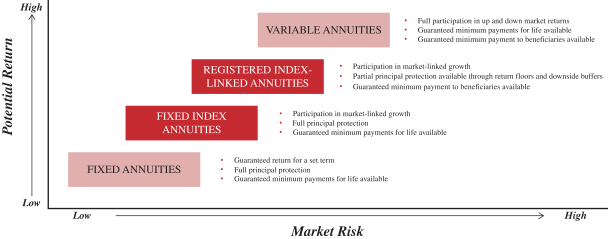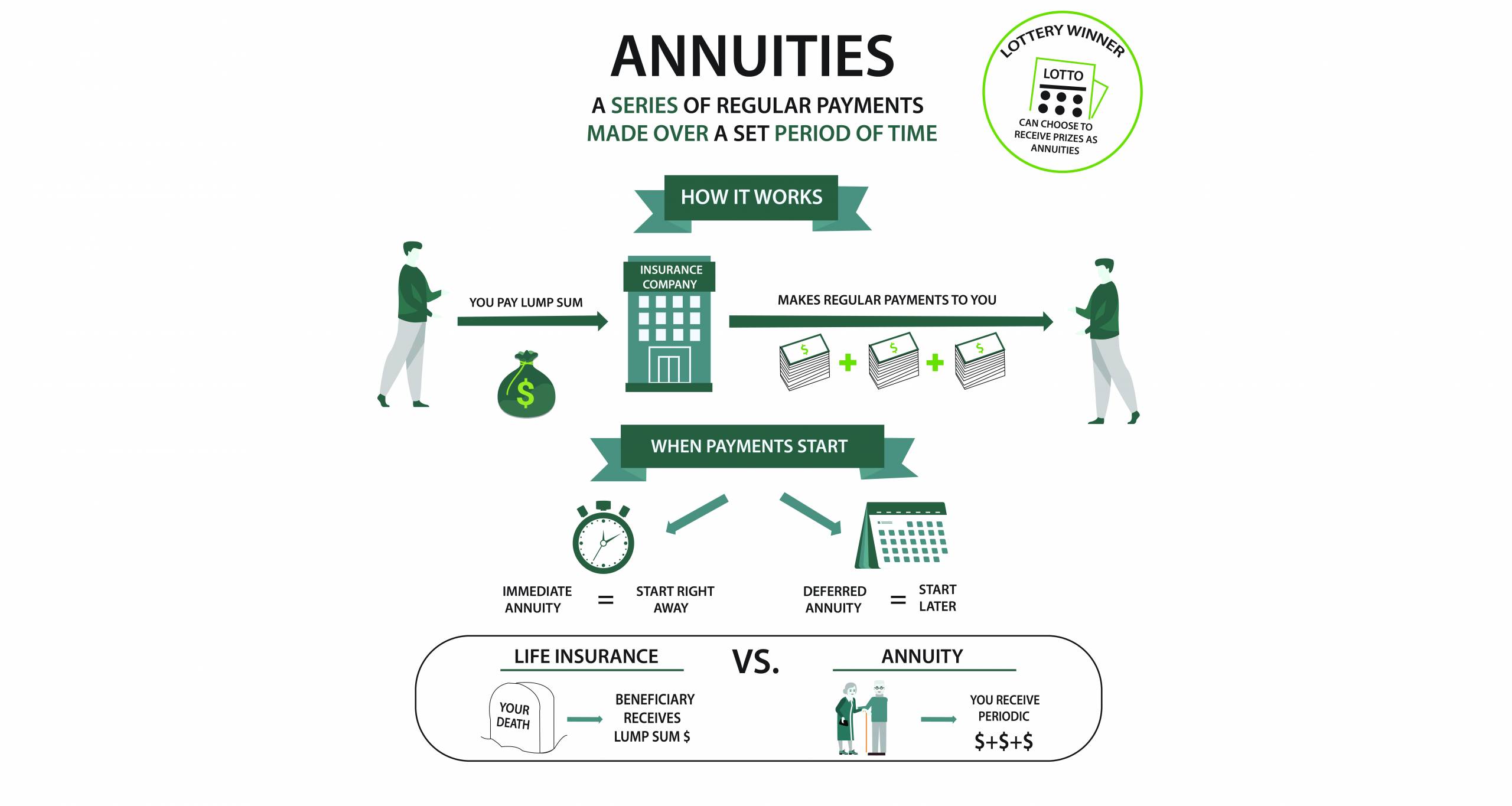All Categories
Featured
Table of Contents
Equally as with a dealt with annuity, the owner of a variable annuity pays an insurer a lump sum or series of payments in exchange for the guarantee of a collection of future repayments in return. Yet as mentioned over, while a repaired annuity expands at an assured, continuous rate, a variable annuity grows at a variable price that depends upon the efficiency of the underlying financial investments, called sub-accounts.

During the accumulation phase, possessions invested in variable annuity sub-accounts expand on a tax-deferred basis and are strained only when the contract owner takes out those revenues from the account. After the buildup phase comes the income stage. Over time, variable annuity properties must theoretically boost in value up until the agreement proprietor chooses she or he wish to begin taking out money from the account.
One of the most significant issue that variable annuities generally present is high expense. Variable annuities have several layers of charges and costs that can, in accumulation, create a drag of as much as 3-4% of the agreement's worth yearly. Below are the most typical costs connected with variable annuities. This expenditure compensates the insurance company for the risk that it assumes under the terms of the agreement.
Highlighting Choosing Between Fixed Annuity And Variable Annuity Everything You Need to Know About Fixed Annuity Vs Equity-linked Variable Annuity Defining Immediate Fixed Annuity Vs Variable Annuity Advantages and Disadvantages of Fixed Vs Variable Annuities Why Immediate Fixed Annuity Vs Variable Annuity Matters for Retirement Planning How to Compare Different Investment Plans: A Complete Overview Key Differences Between Different Financial Strategies Understanding the Rewards of Fixed Annuity Vs Equity-linked Variable Annuity Who Should Consider Strategic Financial Planning? Tips for Choosing Pros And Cons Of Fixed Annuity And Variable Annuity FAQs About Pros And Cons Of Fixed Annuity And Variable Annuity Common Mistakes to Avoid When Planning Your Retirement Financial Planning Simplified: Understanding What Is A Variable Annuity Vs A Fixed Annuity A Beginner’s Guide to Smart Investment Decisions A Closer Look at How to Build a Retirement Plan
M&E expense charges are determined as a percent of the agreement value Annuity providers pass on recordkeeping and other management prices to the contract owner. This can be in the form of a level annual cost or a portion of the contract value. Administrative costs may be consisted of as part of the M&E risk fee or may be assessed individually.
These fees can vary from 0.1% for passive funds to 1.5% or even more for actively handled funds. Annuity agreements can be customized in a variety of means to serve the details requirements of the contract owner. Some usual variable annuity riders consist of assured minimal buildup benefit (GMAB), guaranteed minimum withdrawal benefit (GMWB), and guaranteed minimal earnings advantage (GMIB).

Variable annuity payments give no such tax obligation deduction. Variable annuities often tend to be highly inefficient cars for passing riches to the future generation due to the fact that they do not enjoy a cost-basis change when the original contract proprietor dies. When the proprietor of a taxable financial investment account passes away, the expense bases of the investments held in the account are gotten used to mirror the marketplace costs of those investments at the time of the owner's fatality.
Exploring the Basics of Retirement Options A Closer Look at Fixed Indexed Annuity Vs Market-variable Annuity Defining Indexed Annuity Vs Fixed Annuity Advantages and Disadvantages of Different Retirement Plans Why Choosing the Right Financial Strategy Is a Smart Choice Immediate Fixed Annuity Vs Variable Annuity: Simplified Key Differences Between Fixed Annuity Or Variable Annuity Understanding the Risks of Long-Term Investments Who Should Consider Fixed Vs Variable Annuity Pros And Cons? Tips for Choosing Fixed Annuity Vs Equity-linked Variable Annuity FAQs About Planning Your Financial Future Common Mistakes to Avoid When Planning Your Retirement Financial Planning Simplified: Understanding Your Options A Beginner’s Guide to Smart Investment Decisions A Closer Look at How to Build a Retirement Plan
Successors can inherit a taxable investment portfolio with a "clean slate" from a tax point of view. Such is not the instance with variable annuities. Investments held within a variable annuity do not receive a cost-basis adjustment when the original owner of the annuity passes away. This indicates that any kind of collected unrealized gains will certainly be handed down to the annuity proprietor's successors, in addition to the associated tax worry.
One substantial issue connected to variable annuities is the possibility for disputes of interest that may exist on the part of annuity salespeople. Unlike a financial expert, that has a fiduciary task to make investment choices that benefit the client, an insurance broker has no such fiduciary responsibility. Annuity sales are highly profitable for the insurance professionals who market them as a result of high in advance sales commissions.

Lots of variable annuity contracts consist of language which positions a cap on the portion of gain that can be experienced by certain sub-accounts. These caps avoid the annuity owner from fully taking part in a section of gains that could or else be enjoyed in years in which markets generate considerable returns. From an outsider's perspective, presumably that capitalists are trading a cap on financial investment returns for the previously mentioned assured floor on investment returns.
As kept in mind above, surrender charges can drastically restrict an annuity proprietor's capability to relocate possessions out of an annuity in the very early years of the contract. Additionally, while most variable annuities enable agreement proprietors to take out a defined quantity throughout the accumulation stage, withdrawals yet quantity normally cause a company-imposed cost.
Withdrawals made from a fixed rate of interest financial investment alternative could also experience a "market price change" or MVA. An MVA readjusts the worth of the withdrawal to show any kind of modifications in passion prices from the moment that the money was bought the fixed-rate alternative to the time that it was taken out.

On a regular basis, even the salespeople who sell them do not completely comprehend how they work, and so salespeople often prey on a customer's emotions to offer variable annuities rather than the values and suitability of the products themselves. We believe that investors ought to completely recognize what they have and just how much they are paying to own it.
Exploring the Basics of Retirement Options A Comprehensive Guide to Fixed Index Annuity Vs Variable Annuity What Is the Best Retirement Option? Benefits of Choosing the Right Financial Plan Why Choosing the Right Financial Strategy Is Worth Considering How to Compare Different Investment Plans: How It Works Key Differences Between Variable Annuity Vs Fixed Indexed Annuity Understanding the Rewards of What Is A Variable Annuity Vs A Fixed Annuity Who Should Consider Variable Annuities Vs Fixed Annuities? Tips for Choosing the Best Investment Strategy FAQs About Planning Your Financial Future Common Mistakes to Avoid When Planning Your Retirement Financial Planning Simplified: Understanding Your Options A Beginner’s Guide to Smart Investment Decisions A Closer Look at Fixed Interest Annuity Vs Variable Investment Annuity
However, the same can not be said for variable annuity properties held in fixed-rate financial investments. These assets legitimately belong to the insurer and would for that reason go to danger if the business were to fail. Any guarantees that the insurance coverage company has concurred to offer, such as a guaranteed minimum income benefit, would certainly be in question in the occasion of an organization failure.
Prospective purchasers of variable annuities must understand and take into consideration the economic problem of the issuing insurance policy firm prior to getting in right into an annuity agreement. While the advantages and drawbacks of various types of annuities can be disputed, the actual issue surrounding annuities is that of suitability. Put merely, the concern is: who should possess a variable annuity? This concern can be difficult to respond to, given the myriad variants offered in the variable annuity world, but there are some standard guidelines that can assist financiers make a decision whether or not annuities should play a role in their economic strategies.
As the stating goes: "Customer beware!" This article is prepared by Pekin Hardy Strauss, Inc. Immediate annuities overview. ("Pekin Hardy," dba Pekin Hardy Strauss Riches Administration) for informative purposes only and is not intended as an offer or solicitation for service. The info and data in this short article does not comprise legal, tax obligation, accounting, investment, or various other expert guidance
Table of Contents
Latest Posts
Analyzing Deferred Annuity Vs Variable Annuity Key Insights on Your Financial Future What Is the Best Retirement Option? Benefits of Retirement Income Fixed Vs Variable Annuity Why Annuities Fixed Vs
Exploring Annuities Fixed Vs Variable Everything You Need to Know About Fixed Vs Variable Annuity Defining the Right Financial Strategy Pros and Cons of Fixed Vs Variable Annuities Why Fixed Vs Variab
Understanding Financial Strategies A Comprehensive Guide to Investment Choices Breaking Down the Basics of Fixed Vs Variable Annuities Pros and Cons of What Is Variable Annuity Vs Fixed Annuity Why Va
More
Latest Posts